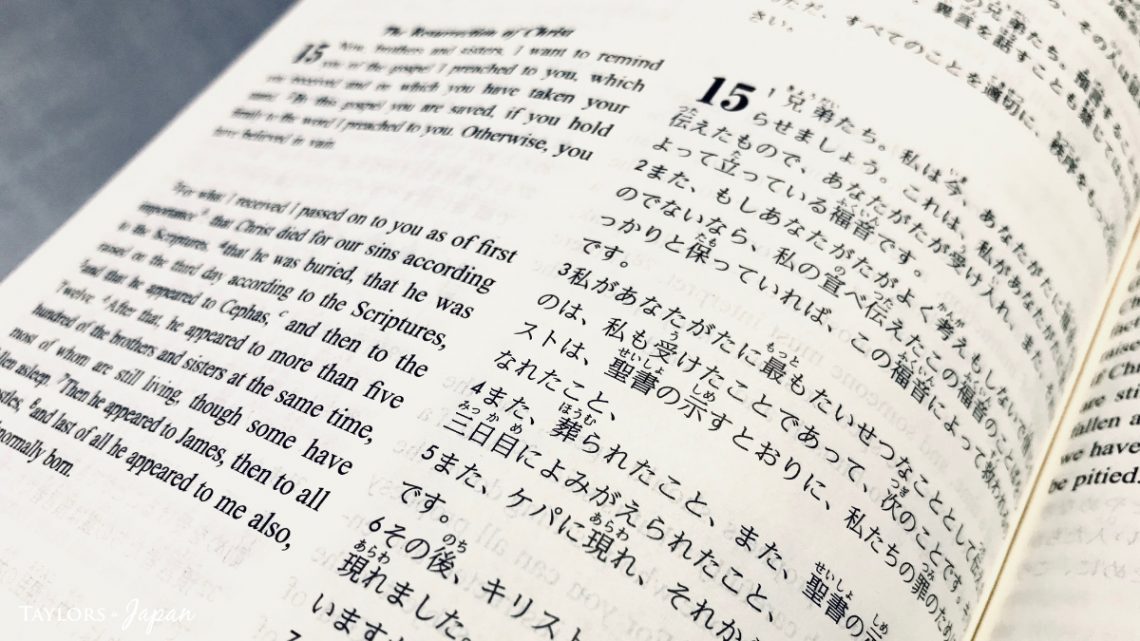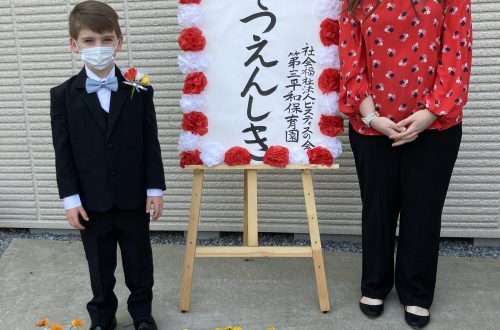With our move to Japan only weeks away now (Lord willing!), I (Leslie) have been doing a lot of preparation work for sermons that I will preach when we arrive. Getting to Japan is only part of the process of moving. Once we arrive, there is a lot of extra paperwork to do, plus things that need to be set up like utilities, etc., not to mention the issue of getting over jet lag. I’ve been trying to prepare a buffer of sermons so the transition will be a bit easier for everyone, and allow me to focus on helping with those tedious odds and ends that need to be wrapped up before we get into normal everyday life.
As of this writing, I have 5 sermons done, and I hope to have at least 3 more before we leave, as this should give me roughly 2 months to adjust before I have to start producing new sermons from scratch.
I thought some of you might be interested to know what goes into preparing for a Japanese sermon, since it is quite different from what I do in English.
Before getting into any details about sermons, I should say that several months ago, I created a plan for roughly the first year’s worth of sermons. I have a list of 36 sermon topics – this gives me some room to adjust as needed, and also to fit in some special short series for various times of the year. The focus of the first year of sermons is on the gospel. We’ll start off with a series on the gospel, explaining in a bit of detail the meaning of the death, burial, and resurrection of Jesus. This will be followed by a series on how that gospel plays out in church life (e.g. worship, the Lord’s Supper, etc.). The next series covers how the gospel shapes our personal lives (e.g. prayer, discipleship, etc.). The final series covers enemies of living this gospel life – things like idol worship, division, and so on. So all of my sermons roughly the first year of our time in Japan are focused on the gospel, with the goal of helping the Matsudo church make the gospel the center of its life both collectively and on an individual basis.
So, with that said, here’s how sermon preparation goes with Japanese sermons.
Step 1: Study. I want to make sure I know what I’m talking about and that I can answer any potential questions, so it’s important that I have in mind the facts regarding the sermon topic. So, for example, if I’m preaching on Jesus’ death on the cross, I want to study some about the atonement, what happened on the cross, and how this all connects to the Christian life. This is also important because it gives me an opportunity to pick up any new theological words in Japanese that I might need to know. Not all of this material will make it to the sermon, but it is a kind of foundation upon which the sermon is ultimately built.
Step 2: Pray. I try to make sure to pray about my sermons, so that as I prepare, I remember it is not primarily me who does the work, but God’s Spirit through his word. The gospel holds the power, not me, so it makes sense to rely on the One who gave us the gospel rather than my ability to present it in a clever way.
Step 3: Write the sermon. I write my sermons from start to finish in Japanese. This is a big challenge – although I am fairly proficient in Japanese, this process involves regularly looking up words and trying to confirm grammar. I have considered writing my sermons in English first and then translating to Japanese so that I can develop a better flow to my lesson. I may change to that in the future. But for now, I prefer it this way because it helps me think about the topic in Japanese and thus from a Japanese perspective, rather than in English from my American perspective. Japanese syntax is inverted compared to English. So, for example, “Jesus died for our sins” would be something like “Jesus our sins for died.” I tend to believe that thinking in this way from the start is better than trying to convert it after the fact. Even if it is not as effective now, I hope it will become more effective over time. That said, I do use a bilingual Bible, which helps me quickly find passages, and then read them in Japanese. I will copy and paste longer passages from the internet, but when feasible, I try to type the passages out while looking at the Japanese Biblical text.
Step 4: Read through the sermon once after I have finished. This helps me pick up on any missed points, and fix any incorrect kanji or grammar I might have input along the way. This is where my sermon preparation ends here in the U.S., but it will continue on to several more steps once we are in Japan. Of course, once I use up my buffer, this will be the process each week.
Step 5: Review the week’s sermon. Read through the sermon once more, and adjust as needed. I may sit down with another minister sometimes and check some grammatical points so I can hopefully grow as a speaker in Japanese.
Step 6: Practice the sermon out loud at least once or twice. For more complicated sermons, I may practice it three or four times. My sermons in Japanese are really manuscripts – in other words, I am reading the sermon rather than speaking from notes. I can occasionally add in a free thought here or there, but there is much more of a risk in Japanese that I will misspeak and lose the listener. Since I’m mostly reading it, I want to make sure it sounds like I’m speaking it rather than reading it, and that I can look up from my screen in a natural way, but this requires practice.
Step 7: Come to the building early on Sunday to review the lesson and practice once more before everyone shows up.
That is the basic 7 step process I use in Japanese sermon preparation. As you can see, some points involve a lot more details than others. My process for preaching in English is similar to Japanese, but the difference is twofold: first, I don’t require so much review or practice, and second, the writing time requires virtually no dictionaries or grammar confirmation. Despite this, I love preaching in Japanese. It’s a joy to speak to people about joy of the gospel, many who have never heard some of these things before. Even if the sermon isn’t perfect (and I doubt any of mine are!), if it encourages, uplifts, and draws people closer to God in Christ, then it is worth the effort.







2 Comments
Chad Bradbury
I love it Leslie! Very thorough and filled with attention to God!
Thank you also for going into the details about what specifically you are looking for in our prayers.
You are in my prayers, and I will make a list and present it on Sunday at church!
Paulo
Good work! Missions was born in the God´s heart, I studied english and now I am studying japanese, I started some years ago. Here go my prayers, may the Lord Jesus bless everyone there and many souls can be saved by Jesus christ our Lord and savior.
*I´ve great hope to arrive in Japan, so, I think that I can learn with you brothers in christ.
Peace and grace be with all you in Jesus´name!